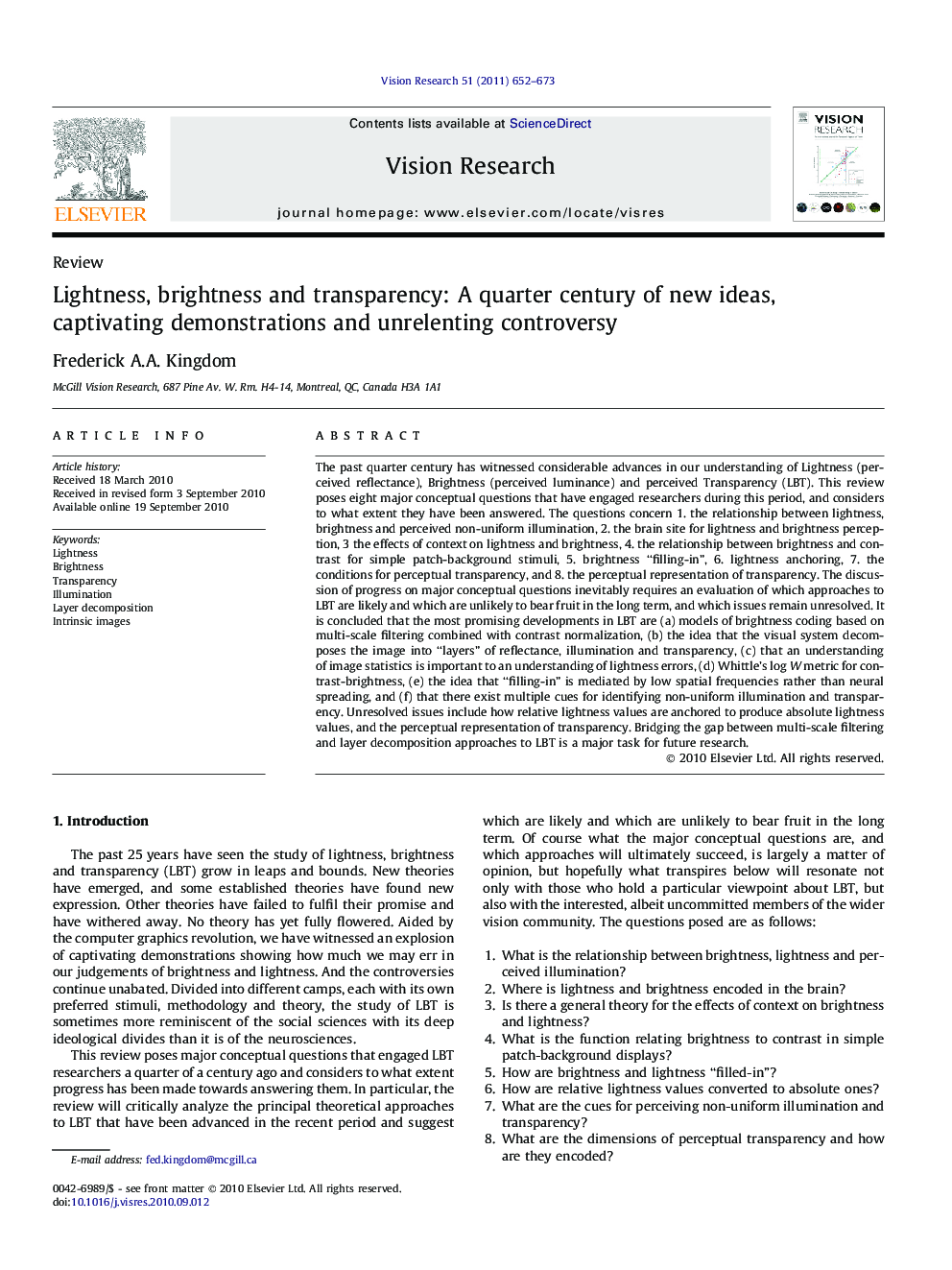| کد مقاله | کد نشریه | سال انتشار | مقاله انگلیسی | نسخه تمام متن |
|---|---|---|---|---|
| 4034173 | 1263433 | 2011 | 22 صفحه PDF | دانلود رایگان |

The past quarter century has witnessed considerable advances in our understanding of Lightness (perceived reflectance), Brightness (perceived luminance) and perceived Transparency (LBT). This review poses eight major conceptual questions that have engaged researchers during this period, and considers to what extent they have been answered. The questions concern 1. the relationship between lightness, brightness and perceived non-uniform illumination, 2. the brain site for lightness and brightness perception, 3 the effects of context on lightness and brightness, 4. the relationship between brightness and contrast for simple patch-background stimuli, 5. brightness “filling-in”, 6. lightness anchoring, 7. the conditions for perceptual transparency, and 8. the perceptual representation of transparency. The discussion of progress on major conceptual questions inevitably requires an evaluation of which approaches to LBT are likely and which are unlikely to bear fruit in the long term, and which issues remain unresolved. It is concluded that the most promising developments in LBT are (a) models of brightness coding based on multi-scale filtering combined with contrast normalization, (b) the idea that the visual system decomposes the image into “layers” of reflectance, illumination and transparency, (c) that an understanding of image statistics is important to an understanding of lightness errors, (d) Whittle’s log W metric for contrast-brightness, (e) the idea that “filling-in” is mediated by low spatial frequencies rather than neural spreading, and (f) that there exist multiple cues for identifying non-uniform illumination and transparency. Unresolved issues include how relative lightness values are anchored to produce absolute lightness values, and the perceptual representation of transparency. Bridging the gap between multi-scale filtering and layer decomposition approaches to LBT is a major task for future research.
Research highlights
► Reviews the previous 25 years of research into lightness, brightness and transparency (LBT).
► Poses eight major conceptual questions about LBT that concerned researchers 25 years ago, and considers to what extent they have been answered.
► Discusses the major classes of model of LBT perception advanced in the recent period.
► Argues that spatial filtering models combined with contrast normalization, intrinsic-image models, and models based on image statistics, are the most promising approaches to understanding LBT.
► Argues that brightness “filling-in” is not caused by neural spreading but the activity of spatial filters tuned to relatively low spatial frequencies.
Journal: Vision Research - Volume 51, Issue 7, 13 April 2011, Pages 652–673